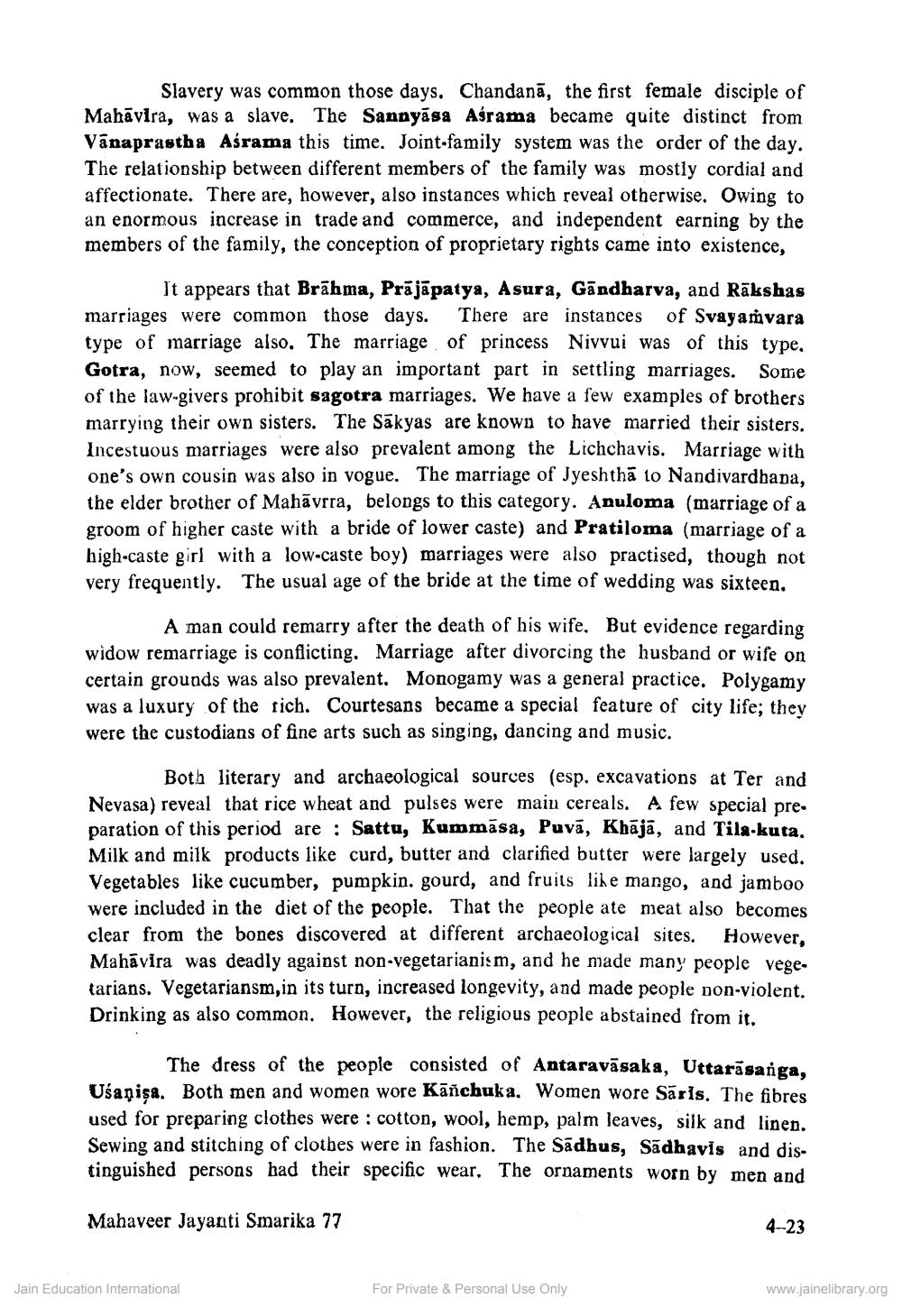________________
Slavery was common those days. Chandanā, the first female disciple of Mahāvira, was a slave. The Sannyāsa Aśrama became quite distinct from Vānaprastha Aśrama this time. Joint-family system was the order of the day. The relationship between different members of the family was mostly cordial and affectionate. There are, however, also instances which reveal otherwise, Owing to an enormous increase in trade and commerce, and independent earning by the members of the family, the conception of proprietary rights came into existence,
It appears that Brāhma, Prājāpatya, Asura, Gāndharva, and Rākshas marriages were common those days. There are instances of Svayamvara type of marriage also. The marriage of princess Nivvui was of this type, Gotra, now, seemed to play an important part in settling marriages. Some of the law-givers prohibit sagotra marriages. We have a few examples of brothers marrying their own sisters. The Sākyas are known to have married their sisters. Incestuous marriages were also prevalent among the Lichchavis. Marriage with one's own cousin was also in vogue. The marriage of Jyeshthā to Nandivardhana, the elder brother of Mahāvrra, belongs to this category. Anuloma (marriage of a groom of higher caste with a bride of lower caste) and Pratiloma (marriage of a high-caste girl with a low-caste boy) marriages were also practised, though not very frequently. The usual age of the bride at the time of wedding was sixteen.
A man could remarry after the death of his wife. But evidence regarding widow remarriage is conflicting. Marriage after divorcing the husband or wife on certain grounds was also prevalent. Monogamy was a general practice. Polygamy was a luxury of the tich. Courtesans became a special feature of city life; they were the custodians of fine arts such as singing, dancing and music.
Both literary and archaeological sources (esp. excavations at Ter and Nevasa) reveal that rice wheat and pulses were main cereals. A few special preparation of this period are : Sattu, Kummāsa, Puvā, Khājā, and Tila-kuta. Milk and milk products like curd, butter and clarified butter were largely used. Vegetables like cucumber, pumpkin. gourd, and fruils like mango, and jamboo were included in the diet of the people. That the people ate meat also becomes clear from the bones discovered at different archaeological sites. However, Mahāvira was deadly against non-vegetarianism, and he made many people vegetarians. Vegetariansm,in its turn, increased longevity, and made people non-violent. Drinking as also common. However, the religious people abstained from it.
The dress of the people consisted of Antaravāsaka, Uttarāsanga, Uśaņişa. Both men and women wore Kāñchuka. Women wore Säris. The fibres used for preparing clothes were : cotton, wool, hemp, palm leaves, silk and linen. Sewing and stitching of clothes were in fashion. The Sadhus, Sadhavis and distinguished persons had their specific wear. The ornaments worn by men and
Mahaveer Jayanti Smarika 77
4-23
Jain Education International
For Private & Personal Use Only
www.jainelibrary.org




